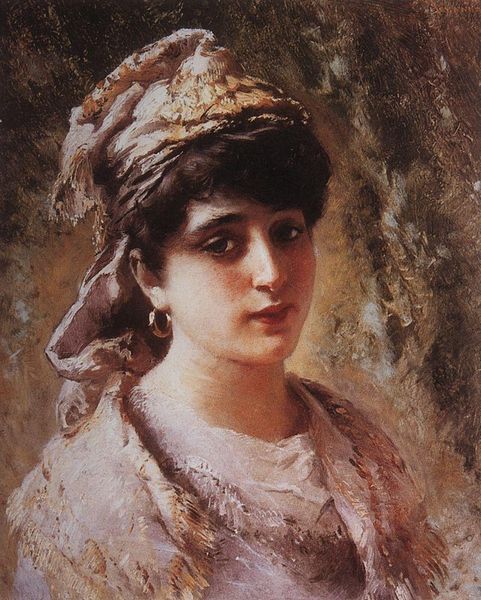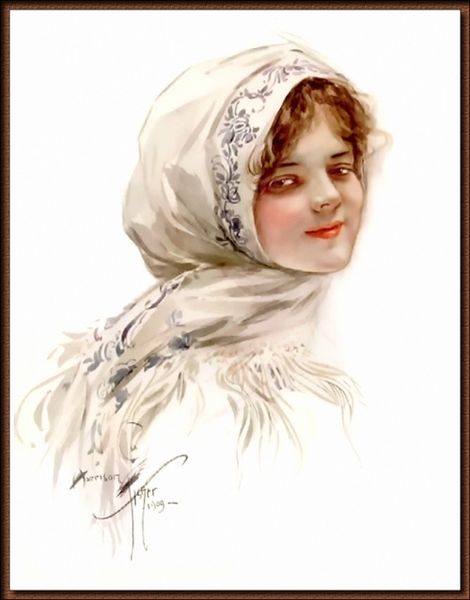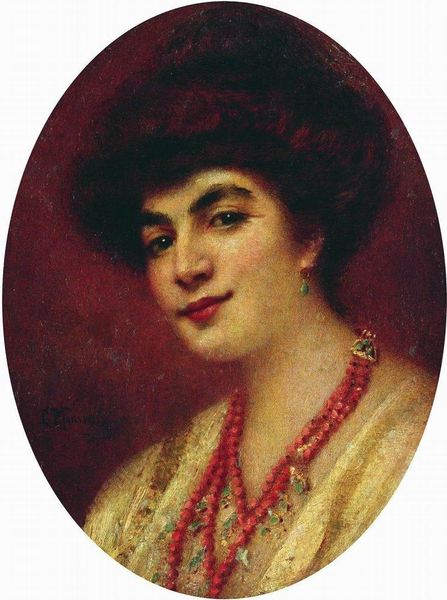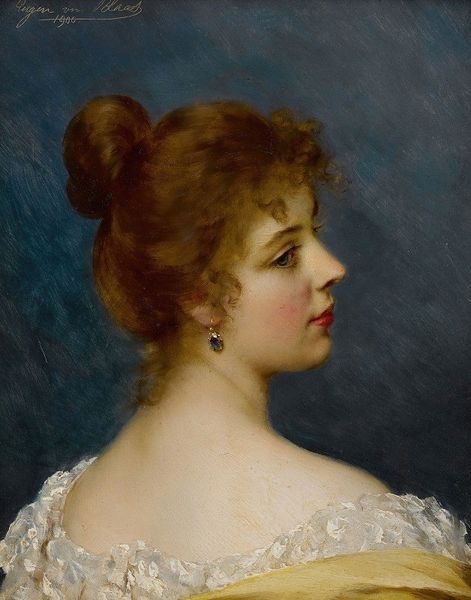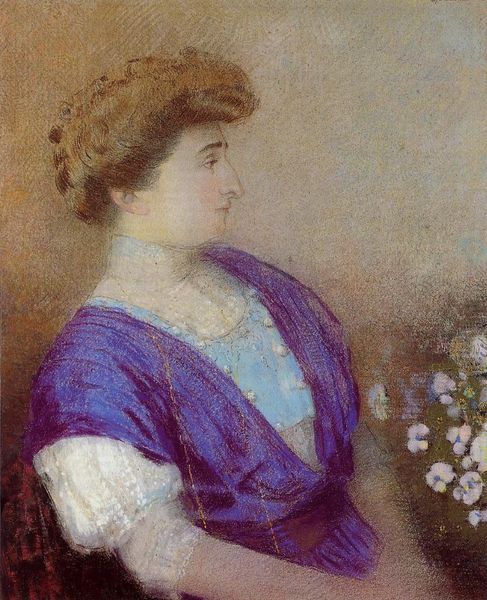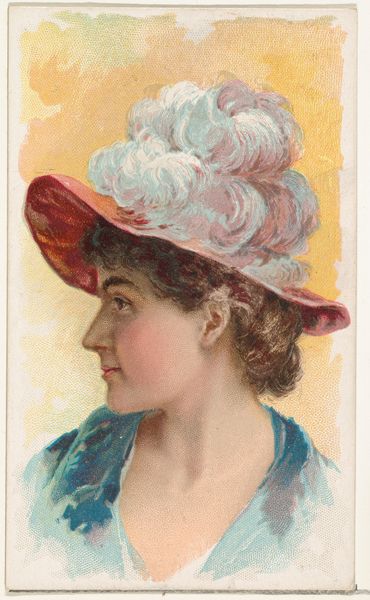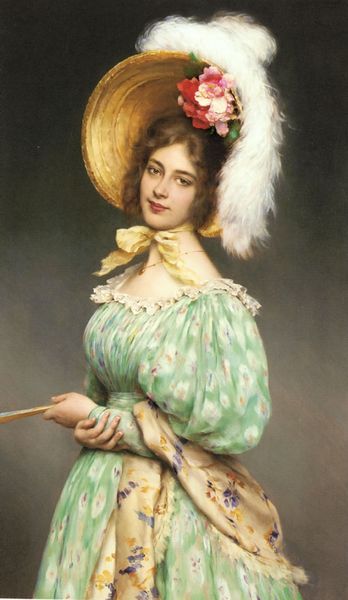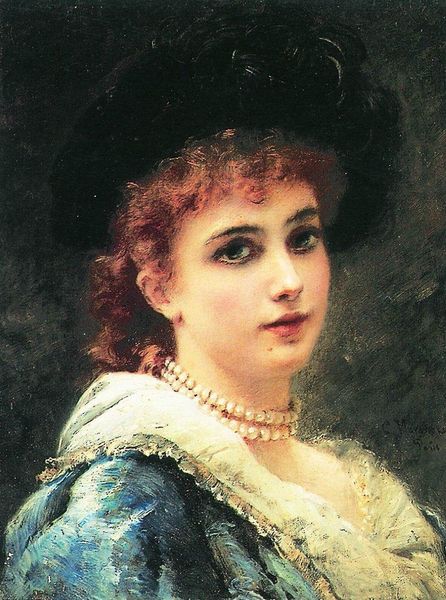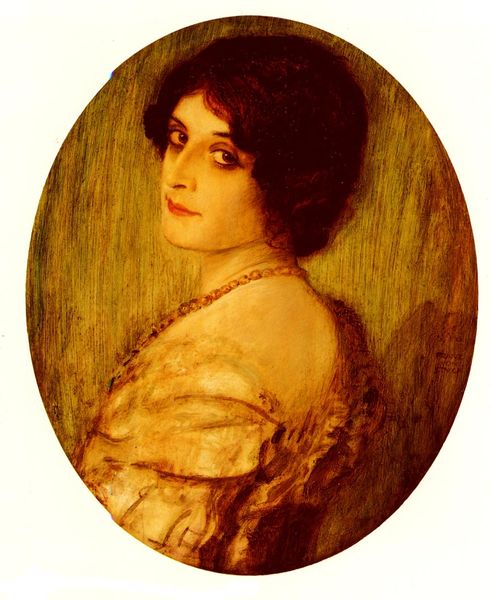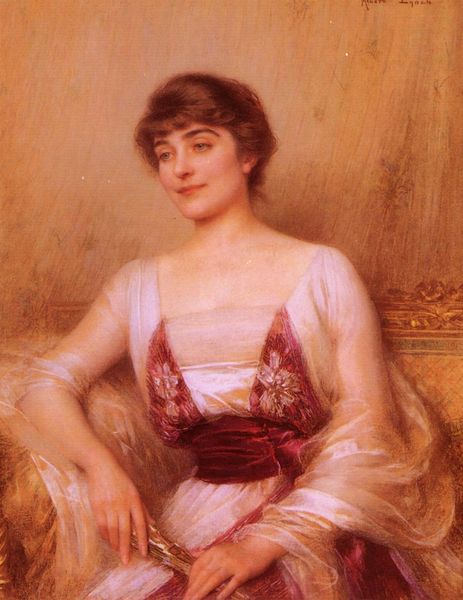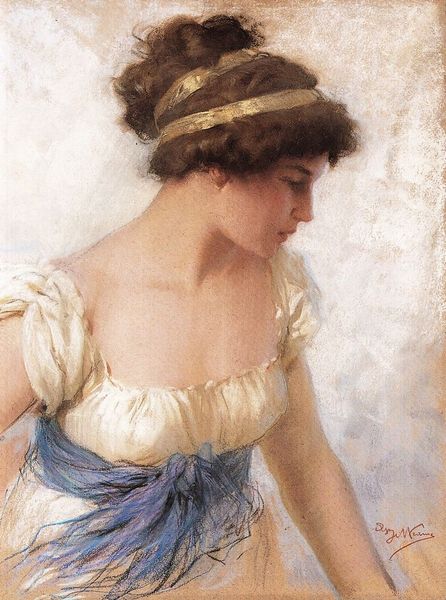
Copyright: Public domain
Curator: Here we have Konstantin Makovsky’s *Portrait of Maria Petipa*, an oil painting completed around 1900. What strikes you first? Editor: It’s remarkably soft, almost dreamlike. The brushwork is so loose; you can really see the movement of the paint, particularly in her dress and the background. Curator: Absolutely. Makovsky’s virtuosity with oil paints is evident in how he captures light and texture. Notice how he uses color to define form, yet the edges remain soft, blending seamlessly. The limited palette—the muted greens and pinks—creates a sense of delicate refinement. Editor: I’m interested in the texture, too. The paint application itself. You can see the impasto in certain areas, particularly on her shoulder, giving it a tangible presence. It suggests a very deliberate act of applying paint, layer upon layer, to achieve this effect. And this wasn't simply churned out; you can feel the human labor and its physical quality that goes into achieving this painterly style. Curator: An excellent point. The texture gives the painting an object quality, rather than just being a flat surface. What does her gaze communicate? It seems to carry an element of quiet contemplation. Editor: It’s like she's lost in thought, perhaps even a bit melancholic. The lack of precise detailing pulls us towards emotional engagement rather than realism alone. This romantic treatment surely served the patron's wishes to commemorate this ballerina through the means of soft and attractive materials! Curator: Exactly! Her gaze, combined with the subdued colors and loose brushwork, suggests the subject is elevated and refined through Makovsky's painting materials, rather than grounded to ordinary life through a very faithful recreation. Editor: For me, analyzing the materials and their processing sheds light on artistic decisions and the economic circumstances of their application. Thank you, that gives me a good sense for how Makovsky has turned a simple material to be more than that, or less than that... it depends on what is sought through portraiture at the time! Curator: Indeed, and it helps me better understand the artwork.
Comments
No comments
Be the first to comment and join the conversation on the ultimate creative platform.
